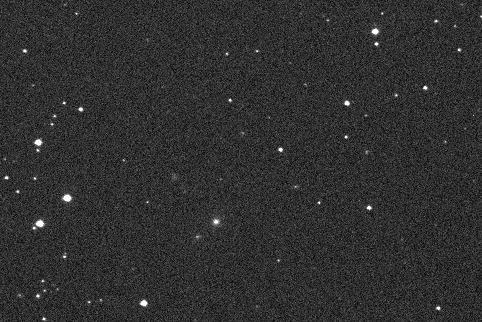
Angular speed at that time was: 48"/min. In the middle of the sequence a drop of magnitude was observed. The image flickr was caused by thin fog enlightened by the environment.
Time: 21:43:49 bis 22:00:12 UT.
Date: 26.6.2011
 |
We determined astrometrical positiones and rotation period of the object.
The sequence shown here consists of 148 single exposures 5secs each. Angular speed at that time was: 48"/min. In the middle of the sequence a drop of magnitude was observed. The image flickr was caused by thin fog enlightened by the environment. Time: 21:43:49 bis 22:00:12 UT. Date: 26.6.2011 |
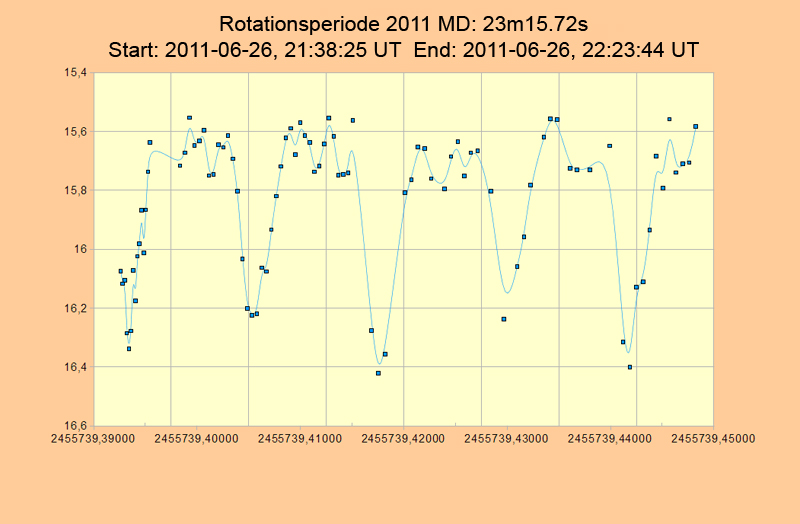 |
| All positional and photometric data were akquired using Astrometrica and the PPMXL Catalogue. 5 single images were stacked to reach a better SNR relation, but in turn less precise time resolution. |
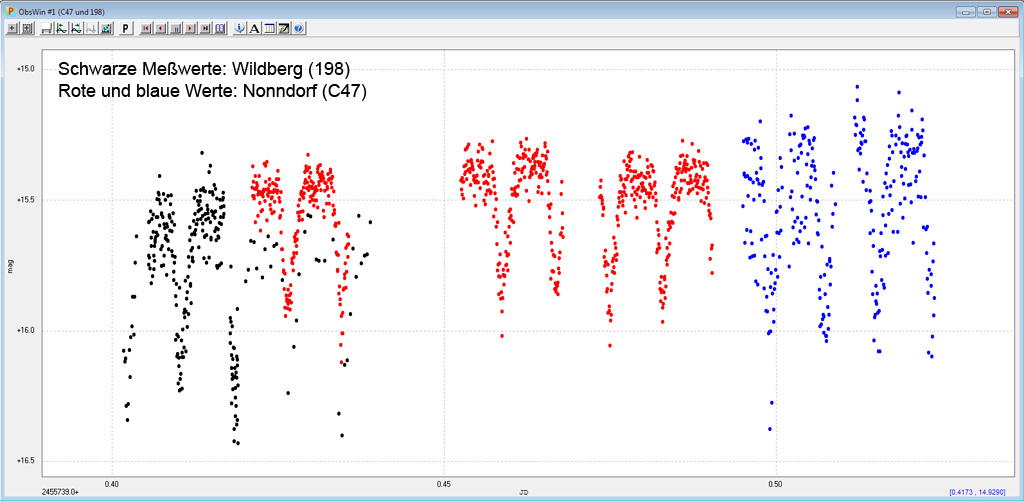 |
| Also Gerhard Dangl from the observatory
Nonndorf (C47) took images at almost the same time. We combined our data to refine our analysis results. Black dots: Wildberg, red and blue dots: Nonndorf. |
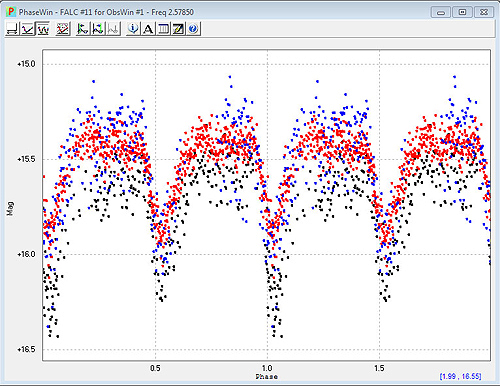 |
The combined data of both observatories show a very good fit in termes of magnitude and phase. Both indicating the existens of two (three ?) different minima. The data akquisitions were totally independent. The results seem to proof the correctness of the results. |
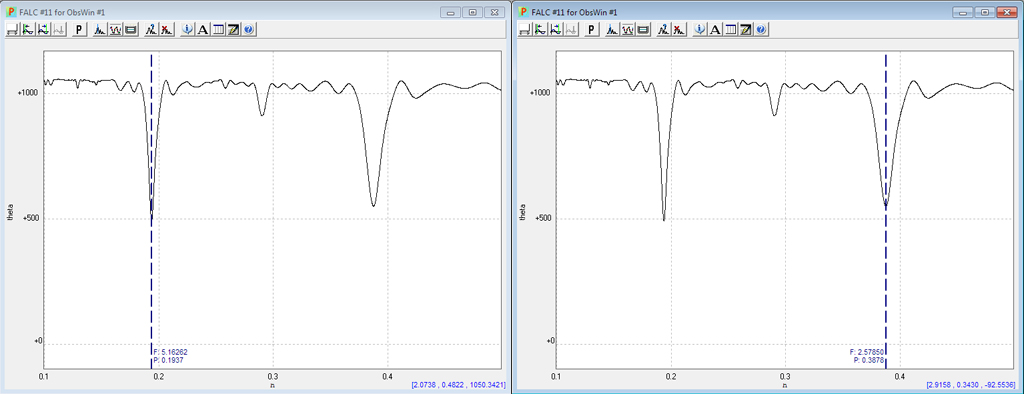 |
| A Fourier analysis of the data was made by using "Peranso".
It clearly shows the two frequencies with a 0% failure probability.
A drop of magnitude every 23m16.1s and inbetween every 11m37.3s a less drop of magnitude was seen. The object has an absolute magnitude of H=28 and a diameter of 5-15m, depending on assumed reflectivity. The analysis results seem to indicate that we have an elongated body, at one side a little bit smaller compared to the other end. Rotating about 3 times per hour along the lateral axes. |
